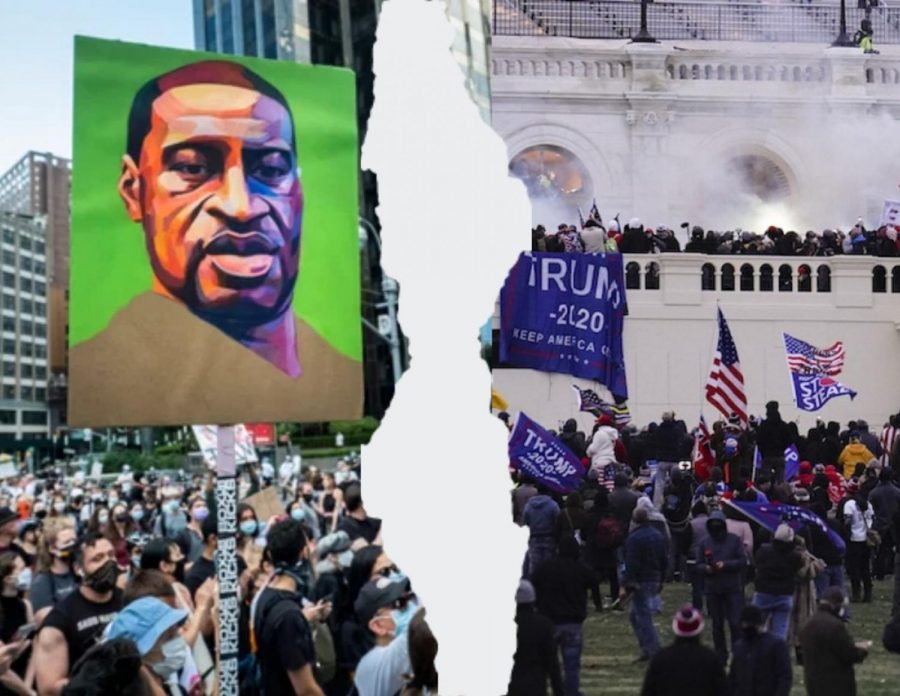OP-ED: Disparities Between the BLM Protests and Capitol Rioters
January 25, 2021
Precisely two weeks before the 2021 presidential inauguration, a catastrophe unfolded outside on Capitol Hill. Thousands of supporters of former-President Donald Trump incited a riot out of strife in response to the results of the 2020 presidential election. This insurrection endangered the lives of the hundreds of individuals who were inside the Capitol, yet it was treated as insignificant by members of the Capitol Police. Police departments are considered qualified to handle these horrific acts of violence, yet the majority of Capitol police officers — with the exception of individuals such as Eugene Goodman — hardly took any action in order to protect people who were inside the Capitol building.
Disregarding the horrendous response of the Capitol Police and the Metropolitan Police Department, a former Capitol police chief defended their lack of response with their understaffing. He even went so far as to comment “I’m pretty sure the Capitol Police were trying to do something a little softer, as we try to welcome protestors up there, but it got out of hand.”
Not only is this not a valid excuse for the appeasement that occurred on behalf of the police, but this grossly ignores the brutality exhibited in the national response to Black Lives Matter protests, when the national guard was called to the Capitol. Unfortunately, these inconsistencies are prevalent within policing, which is shown through centuries of inequality.
The indifference of the police in response to injustice is relatively common when examining their history of systemic racism. Having evolved from slave patrols that unjustly targeted enslaved individuals, police forces repeatedly target marginalized people. They have historically had ties to racist groups such as the Ku Klux Klan, often accounting for their complicity in injustice.
Police departments have responded with brutality to protests for racial justice for centuries, such as in the numerous instances when they violently combatted protests during the Civil Rights Era. These actions remain current and were represented within the violence that was inflicted upon individuals who took part in Black Lives Matter protests in 2020.
People that were involved in these protests for racial justice were attacked by police through the use of weapons, including rifles, rubber bullets, and tear gas. These iniquitous actions mirror the atrocities that stemmed from police officers in response to Civil Rights protests, as the violent tactics that were used to suppress the public outcry for social justice continue to be used by the police to this day.
Disparities in the police response to recent protests is neither surprising nor unusual given the extent to which racism permeates society. Despite these horrific instances, people continue to deny the existence of systemic racism. Until people can grasp the gripping reality of the inequalities that exist within the United States, where Black people are two and a half times more likely than white people to be killed by a police officer (as stated by The Washington Post), change cannot be effectively enacted.




